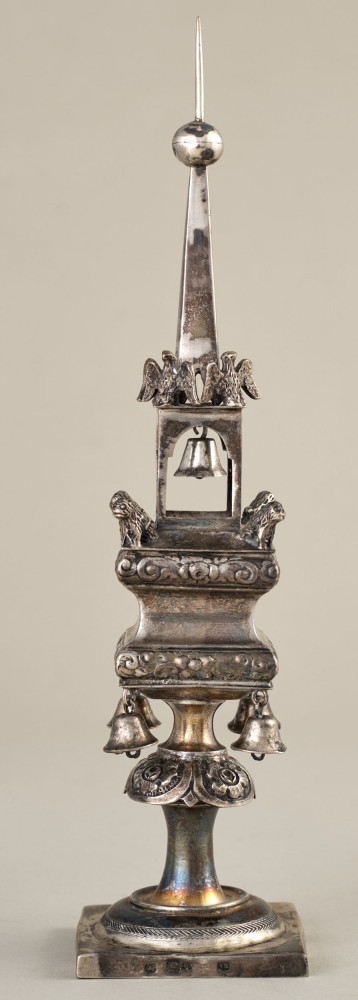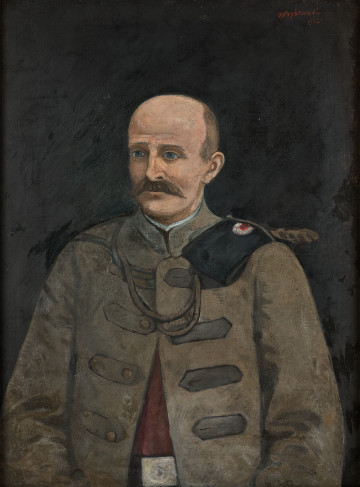
Balsamine
19th (?) century
Castle Museum in Łańcut
Part of the collection: History of the city and the region
The Torah is the Pentateuch, the first part of the Hebrew Bible, referred to by Christians as the Old Testament, including the Genesis, Exodus, Leviticus, Numbers, and Deuteronomy. In a broader sense, it is traditional religious law and all rabbinic literature. The Torah scroll is Judaism's most sacred ritual object. During communal prayers, every week different fragments are read from it, and this way the whole text is read in public throughout the year in the synagogue. This Torah has a typical form of a scroll rolled on two rollers. It was made of parchment sheets sewn together with white thread. The text was handwritten in black ink. The rollers have decorated dials and turned handles. The scroll also includes a velvet ribbon used for tying it together. While displaying the raised scroll, the accompanying chant says: This is the Torah that Moses Set before the Children of Israel. The term Torah is sometimes translated as "Law" or "Order," but it has a much broader meaning. A commentary on the reading of the Torah is referred to the “word of Torah” and the school that teaches the basics of religious knowledge is called a Talmud Torah. The Torah is the link between God and the world; it is the vehicle of revelation. According to tradition, the Torah was revealed to Moses – this notion was and is taken literally by ultra-Orthodox Jews to this day. The tradition also includes a non-literal interpretation of the claim that all commentaries and subsequent decisions were also revealed to Moses. Inseparable from the Written Torah is the Oral Torah – elaborations and commentaries passed down through oral tradition and later written down in the Mishnah and Talmud. The Torah is a living tradition and the basis for all the religious activity of the Jews. Joanna Kluz
Other names
Torah
Author / creator
Dimensions
height: 96 cm, width: 17 cm
Object type
History of the city and the region
Technique
embossing, sewing
Material
bone, wood, nacre, parchment
Creation time / dating
Creation / finding place
Owner
Castle Museum in Łańcut
Identification number
Location / status

19th (?) century
Castle Museum in Łańcut

20th century
Castle Museum in Łańcut

20th century
Castle Museum in Łańcut
DISCOVER this TOPIC
Museum of King Jan III's Palace at Wilanów
DISCOVER this PATH
Educational path